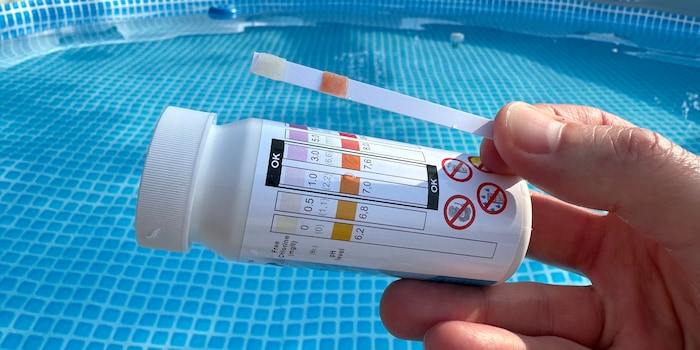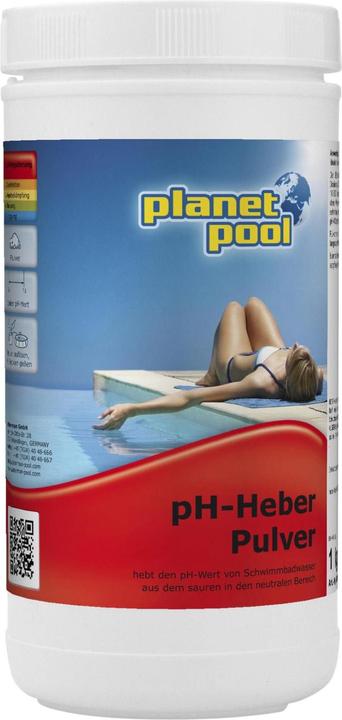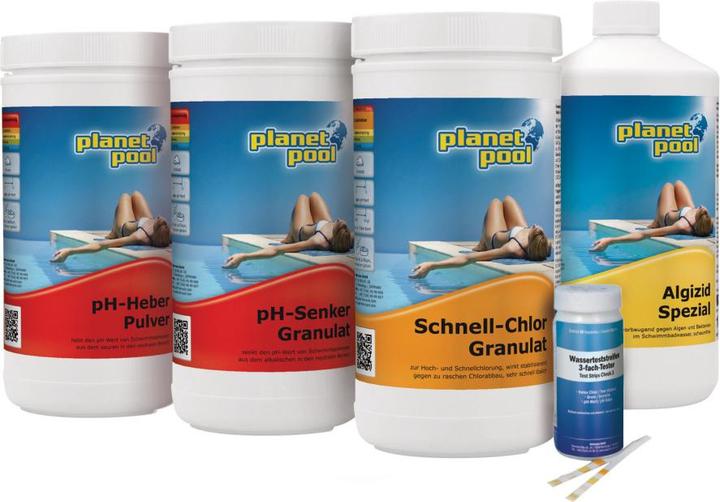
Guide
Sheets, nets, chemicals – watery fun in the garden is keeping this amateur pool boy on his toes
by Martin Jungfer

To achieve clean water in a swimming pool, it's not enough to add a lot of chlorine. Without the right pH, the disinfectant is much less useful. A poor pH can even cause damage.
What the skilled lifeguard does to the outdoor pool, you have to do yourself with the above-ground pool at home: keep the water clean. I'm in my fourth year as a home poolman. A round pool containing 4500 litres of water is my territory.
Since I've learned that the most important thing is to have the right pH, my job has been considerably easier. As a good pool operator, you're always a bit of a chemist. That starts with understanding pH. What does "pH" mean? pH" is an abbreviation of the Latin "pondus Hydrogenii", which translates as "weight of hydrogen". The pH of a liquid refers to the concentration of hydrogen ions in it. The scale ranges from 0 to 14. With a value of 7, water is considered neutral, i.e. it is neither basic nor alkaline.
In general, it's rather a pH that's too high that causes problems. One cause is the presence of foreign substances in the water, such as leaves, dead insects, bacteria or hair. These can cause the pH to drop. There's only one solution: get the net out regularly. And of course, always filter and clean the filter when it becomes clogged. Too much detergent can also cause the pH to rise. A high pH value can be recognised by the fact that the water becomes cloudy or even milky.
On the other hand, if the pH is too low, rainwater is often the cause. When it falls from the sky, it has a pH of around 5.6 to 5.8 and is more acidic than pool water should be. So if it rains a lot, the pH of your pool drops. A cover reduces the problem.
You urgently need to correct a pH that is too low or too high. To do this, there are means that are fortunately designated in such a way as to leave no questions unanswered as to their effectiveness.
You need to urgently correct a pH that is too low or too high.


Planet Pool PH-Plus granules
1000 g

On the products, there are dosage instructions, adapted to the size of your pool. The basic rule is to adjust the pH correctly first, then add disinfectant. For example, when it's hot, I always measure the pH in the morning. If it's not within the normal range, I adjust it using a lift or a lowering device. After a few hours, the pH has generally stabilised. There's nothing to stop you having a little refresher after work. If the pH is too low or too high, you're better off foregoing this refreshment because of the health risks (see above).
It's good that you're asking the question here. So you've understood that it's important. For measurements, you can either use strips of paper or tablets, or get yourself a pH digital meter.
As you have a pretty generous finish area in the pool, you don't need to spend too much money on this. At first I worked with the tablet solutions, but ended up using the paper strips. I remember the varnish test in my chemistry classes. The result isn't super precise, but thanks to the colour scale on the plastic box, it's easy to make the connection between the coloured strips and the pH value. What's more, I get the result fairly quickly: three seconds in the water, 15 seconds waiting, and that's it. As well as the pH value, the strip also gives me the chlorine content.
I recently acquired the digital pH meter linked above. Here, I get the pH to the nearest hundredth. The downside: the device needs batteries, has to be adjusted regularly, and it takes me quite a while to get a stable value on the screen via the glass electrode. What's more, if you do buy such a device, don't do as I did and first remove that funny cap at the bottom after unpacking it. After all, it contains a standard solution that I quickly emptied and had to buy again.

Do you have any questions about pool pH? Or any tips you'd like to share with the pool community? Feel free to share them in the comments section!
Headline photo: Martin Jungfer
Journalist since 1997. Stopovers in Franconia (or the Franken region), Lake Constance, Obwalden, Nidwalden and Zurich. Father since 2014. Expert in editorial organisation and motivation. Focus on sustainability, home office tools, beautiful things for the home, creative toys and sports equipment.
Practical solutions for everyday problems with technology, household hacks and much more.
Show all